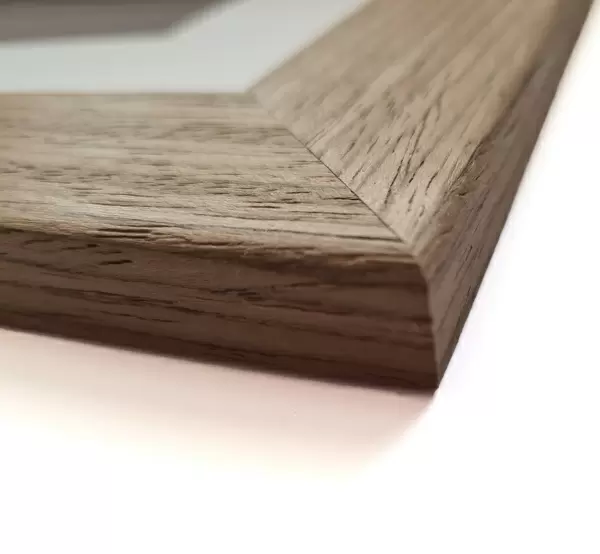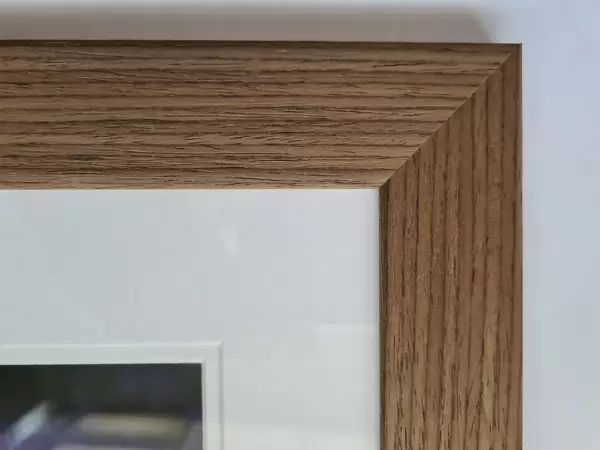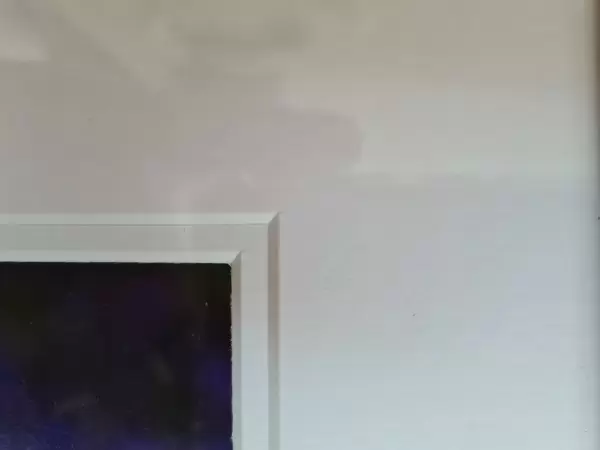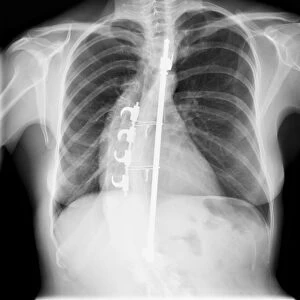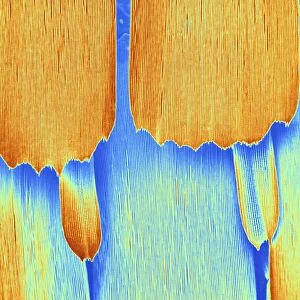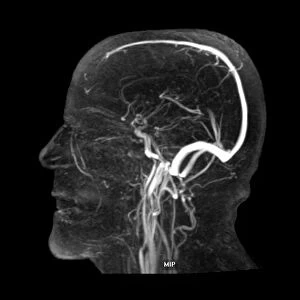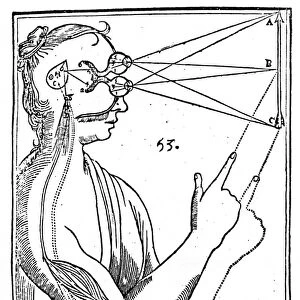Premium Framed Print > Europe > United Kingdom > Scotland > Aberdeenshire > Huntly
Premium Framed Print : Model of a Cro-Magnon man doing a cave painting
![]()

Framed Photos from Science Photo Library
Model of a Cro-Magnon man doing a cave painting
Cave painting. Model of a Cro-Magnon man, a type of early modern human (Homo sapiens sapiens), doing a cave painting. It is thought that animals were painted onto the walls of the caves in which Cro-Magnons lived to give their hunters power over animals, ensuring a successful hunt. Cave paintings first appeared in Europe around 35, 000 years ago. Cro-Magnons lived in Europe, northern Africa and southern Asia from 50, 000 years ago. Cro-Magnons are so-called due to discoveries made in a rock shelter of that name in France. This model, from a Nordstar exhibition, was photograph- ed at the Naturkundemuseum in Stuttgart, Germany
Science Photo Library features Science and Medical images including photos and illustrations
Media ID 6371745
© VOLKER STEGER/NORDSTAR - 4 MILLION YEARS OF MAN/SCIENCE PHOTO LIBRARY
Anthropology Cave Cave Painting Cognitive Archaeology Cro Magnon Homo Sapiens Sapiens Painting Paintings Paleolithic Rock Painting Palaeontology
17"x15" (43x38cm) Premium Frame
FSC real wood frame with double mounted 10x8 print. Double mounted with white conservation mountboard. Frame moulding comprises stained composite natural wood veneers (Finger Jointed Pine) 39mm wide by 21mm thick. Archival quality Fujifilm CA photo paper mounted onto 1mm card. Overall outside dimensions are 17x15 inches (431x381mm). Rear features Framing tape to cover staples, 50mm Hanger plate, cork bumpers. Glazed with durable thick 2mm Acrylic to provide a virtually unbreakable glass-like finish. Acrylic Glass is far safer, more flexible and much lighter than typical mineral glass. Moreover, its higher translucency makes it a perfect carrier for photo prints. Acrylic allows a little more light to penetrate the surface than conventional glass and absorbs UV rays so that the image and the picture quality doesn't suffer under direct sunlight even after many years. Easily cleaned with a damp cloth. Please note that, to prevent the paper falling through the mount window and to prevent cropping of the original artwork, the visible print may be slightly smaller to allow the paper to be securely attached to the mount without any white edging showing and to match the aspect ratio of the original artwork.
FSC Real Wood Frame and Double Mounted with White Conservation Mountboard - Professionally Made and Ready to Hang
Estimated Image Size (if not cropped) is 24.4cm x 18.5cm (9.6" x 7.3")
Estimated Product Size is 43.1cm x 38.1cm (17" x 15")
These are individually made so all sizes are approximate
Artwork printed orientated as per the preview above, with landscape (horizontal) orientation to match the source image.
EDITORS COMMENTS
This print showcases a model of a Cro-Magnon man engrossed in the ancient art of cave painting. The Cro-Magnons, an early modern human species known as Homo sapiens sapiens, inhabited Europe, northern Africa, and southern Asia around 50,000 years ago. It is believed that these skilled hunters adorned the walls of their caves with depictions of animals to gain power over them and ensure successful hunts. Cave paintings emerged approximately 35,000 years ago in Europe and have since fascinated anthropologists and paleontologists alike. This particular model was captured at the Naturkundemuseum in Stuttgart, Germany during a Nordstar exhibition. The term "Cro-Magnon" originated from archaeological findings at a rock shelter bearing the same name in France. These remarkable individuals left behind an invaluable legacy through their cognitive archaeology practices such as cave painting. As we gaze upon this photograph, we are transported back thousands of years to witness the artistic prowess and cultural significance held by our ancestors. The intricate details on display remind us of humanity's enduring curiosity about its origins and our innate desire for self-expression through art. Science Photo Library has once again provided us with a glimpse into our past through this thought-provoking image that beautifully encapsulates the essence of Paleolithic life: creativity intertwined with survival instincts.
MADE IN THE UK
Safe Shipping with 30 Day Money Back Guarantee
FREE PERSONALISATION*
We are proud to offer a range of customisation features including Personalised Captions, Color Filters and Picture Zoom Tools
SECURE PAYMENTS
We happily accept a wide range of payment options so you can pay for the things you need in the way that is most convenient for you
* Options may vary by product and licensing agreement. Zoomed Pictures can be adjusted in the Basket.



